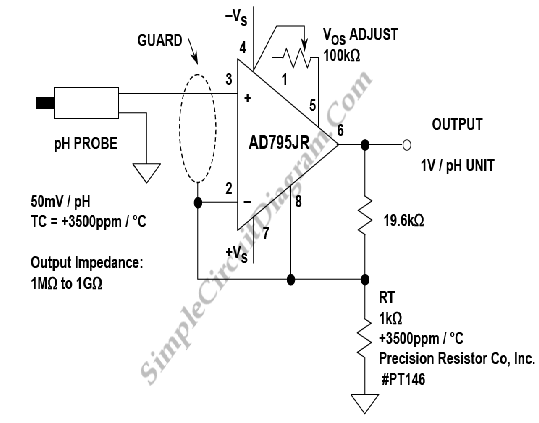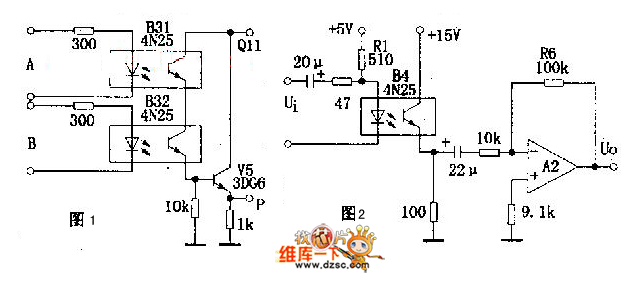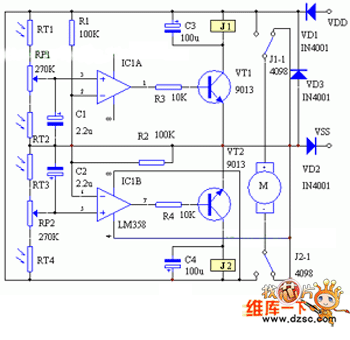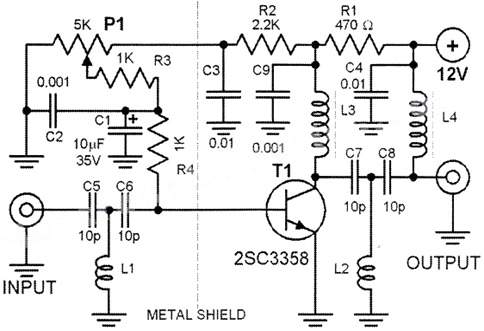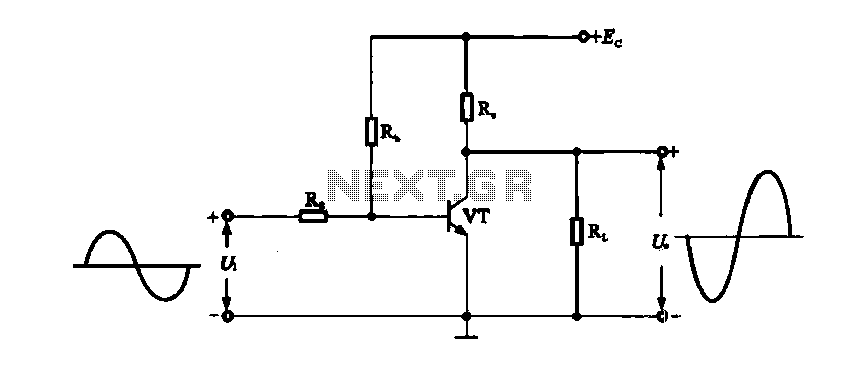
Application of the differential amplifier circuit in a simple small oscilloscope
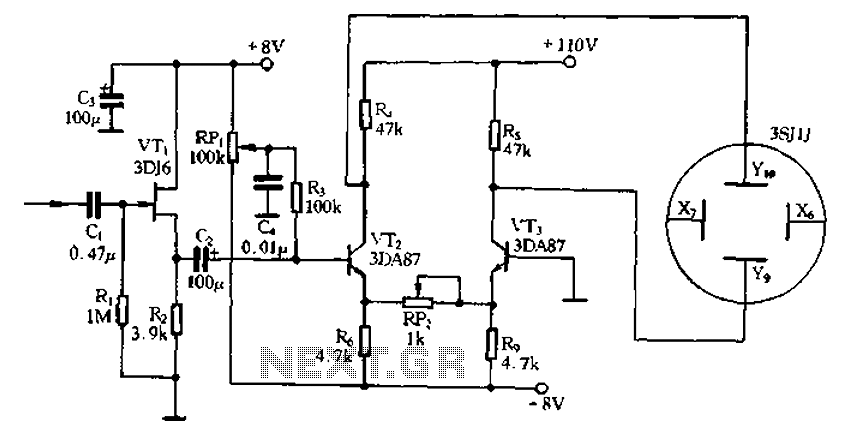
Application of the differential amplifier circuit in a simple small oscilloscope.
The differential amplifier circuit is a crucial component in the design of a simple small oscilloscope. This circuit is designed to amplify the difference between two input voltage signals while rejecting any common-mode signals, making it ideal for applications where precision and noise immunity are essential.
In the context of a small oscilloscope, the differential amplifier can be utilized to measure voltage signals from various sources, such as sensors or other electronic circuits. The circuit typically consists of operational amplifiers (op-amps) configured in a differential mode, which allows for high input impedance and low output impedance. This configuration ensures that the oscilloscope can accurately capture and display the voltage waveform without loading the source.
The differential amplifier circuit includes resistors that set the gain of the amplifier, allowing for adjustments based on the specific requirements of the measurement. The output of the differential amplifier feeds into the analog-to-digital converter (ADC) of the oscilloscope, converting the amplified analog signal into a digital format for processing and display.
Additionally, the small oscilloscope may incorporate features such as a display unit, control buttons for adjusting time base and voltage scale, and power supply circuitry to ensure stable operation. The overall design emphasizes portability and ease of use, making it suitable for both educational purposes and field applications. By effectively utilizing the differential amplifier, the small oscilloscope can provide accurate waveform representations, facilitating analysis and troubleshooting in various electronic systems.Application of the differential amplifier circuit in a simple small oscilloscope
The differential amplifier circuit is a crucial component in the design of a simple small oscilloscope. This circuit is designed to amplify the difference between two input voltage signals while rejecting any common-mode signals, making it ideal for applications where precision and noise immunity are essential.
In the context of a small oscilloscope, the differential amplifier can be utilized to measure voltage signals from various sources, such as sensors or other electronic circuits. The circuit typically consists of operational amplifiers (op-amps) configured in a differential mode, which allows for high input impedance and low output impedance. This configuration ensures that the oscilloscope can accurately capture and display the voltage waveform without loading the source.
The differential amplifier circuit includes resistors that set the gain of the amplifier, allowing for adjustments based on the specific requirements of the measurement. The output of the differential amplifier feeds into the analog-to-digital converter (ADC) of the oscilloscope, converting the amplified analog signal into a digital format for processing and display.
Additionally, the small oscilloscope may incorporate features such as a display unit, control buttons for adjusting time base and voltage scale, and power supply circuitry to ensure stable operation. The overall design emphasizes portability and ease of use, making it suitable for both educational purposes and field applications. By effectively utilizing the differential amplifier, the small oscilloscope can provide accurate waveform representations, facilitating analysis and troubleshooting in various electronic systems.Application of the differential amplifier circuit in a simple small oscilloscope
